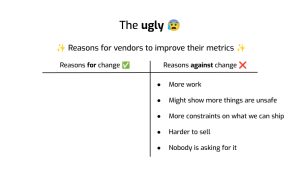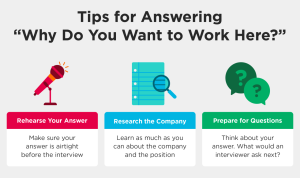How Dating Apps Are Adapting to AI Regulation highlights the transformative journey of dating applications as they navigate the increasing demands for artificial intelligence oversight. With the rapid advancement of technology, dating apps are finding innovative ways to align with new regulations that prioritize user safety, privacy, and ethical standards. The intersection of technology and compliance not only shapes the operational landscape of these platforms but also impacts user experiences and expectations.
As AI technology becomes more integral to matchmaking algorithms, dating apps must balance innovation with regulatory adherence. Developers are implementing advanced moderation tools and transparency measures designed to ensure that users’ data is protected while still providing personalized experiences. In this evolving environment, dating apps are not merely adapting to regulations; they are rethinking their strategies to enhance trust and engagement among users.
In the 21st century, social media has transformed the way individuals and communities communicate. It encompasses various digital platforms that enable users to create, share, and engage with content in real time. With the proliferation of smartphones and internet accessibility, social media has become an integral part of daily life for billions of people worldwide. This article delves into the multifaceted influence of social media on modern communication, exploring its benefits, challenges, and implications for personal and professional interactions.
1. The Evolution of Communication
The shift from traditional forms of communication—such as print media, telephony, and face-to-face interactions—to digital communication channels has been profound. Social media platforms like Facebook, Twitter, Instagram, and TikTok have redefined the context and scope of communication, allowing for instantaneous interactions across vast distances. According to a study by the Pew Research Center, over 70% of American adults use social media, highlighting its ubiquity in contemporary society.
Historically, communication was constrained by geographical and social boundaries. However, the advent of the internet has enabled voices that were once marginalized to contribute to broader discourses. For example, social media has played a pivotal role in social movements, allowing activists to mobilize support and disseminate information rapidly. The Arab Spring and the Black Lives Matter movement exemplify how social media can amplify voices and effect social change.
2. Enhancing Connectivity and Community
One of the most notable advantages of social media is its ability to connect individuals regardless of physical location. Users can maintain relationships with family and friends, meet new people with similar interests, and collaborate with colleagues across the globe. This enhanced connectivity fosters a sense of community and belonging, particularly for those who may feel isolated in their offline lives.
Moreover, social media platforms facilitate the exchange of diverse perspectives, enriching interactions and promoting cultural understanding. Through forums, groups, and communities, users can engage in discussions, share experiences, and learn from one another. This democratization of information allows for a more inclusive dialogue, enabling participants from different backgrounds to share their narratives.

3. Challenges of Social Media Communication
While social media offers significant benefits, it also presents various challenges that can hinder effective communication. Misinformation and fake news have proliferated on these platforms, often spreading faster than verified information. A 2020 study conducted by MIT revealed that false information on Twitter is retweeted six times more than true information, emphasizing the need for critical media literacy among users.
Cyberbullying and harassment are other serious concerns associated with social media use. Anonymity can embolden users to engage in harmful behavior, leading to real-world consequences for victims. The psychological impact of online bullying can be severe, with studies indicating increased rates of anxiety, depression, and suicidal ideation among affected individuals.
4. The Role of Social Media in Professional Communication
Social media has also transformed professional communication and networking. Platforms such as LinkedIn provide opportunities for individuals to build their professional brand, connect with industry peers, and seek employment opportunities. Companies are increasingly using social media for marketing, customer service, and employee engagement, recognizing its potential to enhance brand visibility and foster customer loyalty.
However, the blending of personal and professional lives on social media requires individuals to navigate complex boundaries. The content shared on personal profiles can influence professional reputations, leading to potential career repercussions. As a result, professionals must exercise caution and discernment in their online interactions.
5. The Impact of Algorithms and Echo Chambers: How Dating Apps Are Adapting To AI Regulation
Another critical aspect of social media communication is the role of algorithms in shaping user experiences. Social media platforms utilize algorithms to curate content based on user preferences, interests, and behaviors. While this personalization can enhance user engagement, it can also create echo chambers, where individuals are predominantly exposed to viewpoints that align with their own.
This phenomenon can stifle healthy discourse and contribute to polarization within society. Users may become resistant to opposing viewpoints, leading to divisive conversations and a lack of mutual understanding. The challenge lies in encouraging users to seek diverse perspectives and engage in constructive dialogue, fostering a more informed and open-minded community.
6. Future Trends in Social Media Communication
Looking ahead, the landscape of social media communication is likely to evolve further as technology advances. Innovations such as artificial intelligence (AI) and augmented reality (AR) are poised to reshape user interactions and experiences on these platforms. For example, AI-powered chatbots are increasingly being used for customer service, providing instant responses and assistance to users.
Moreover, the rise of video content on platforms like TikTok and Instagram suggests a shift towards more visual communication. Users are gravitating towards engaging, dynamic content, necessitating a reevaluation of communication strategies for brands and individuals alike. The emphasis on authenticity and transparency in social media interactions is also expected to grow, with audiences increasingly valuing genuine connections over curated personas.
7. Conclusion
Balancing Benefits and Challenges
In summary, social media has profoundly influenced modern communication, offering unprecedented opportunities for connection, collaboration, and expression. However, it is essential to recognize and address the challenges that accompany this digital revolution, including misinformation, cyberbullying, and the potential for echo chambers. As society continues to navigate the complexities of social media, fostering critical media literacy, promoting respectful discourse, and embracing diverse perspectives will be crucial in harnessing the full potential of these platforms.
Ultimately, the future of communication lies in finding a balance between leveraging the benefits of social media while mitigating its challenges. As users become more aware of the implications of their online interactions, we can aspire towards a more informed, connected, and compassionate digital landscape.






